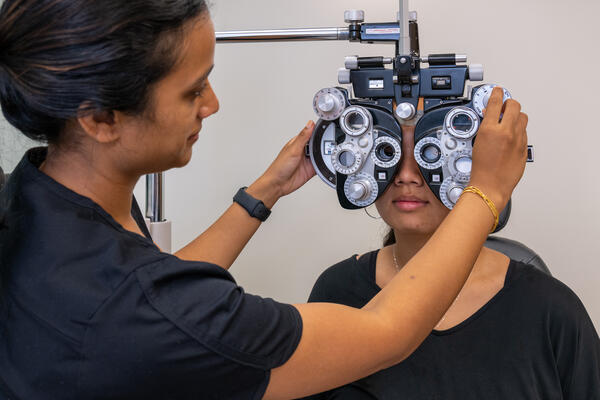Andalusia Ophthalmologist: Professional Ophthalmologists in Your Area
Andalusia Ophthalmologist: Professional Ophthalmologists in Your Area
Blog Article
The Pros and Cons of Various Refractive Surgical Procedures for Boosted Eyecare

LASIK Surgical Procedure
LASIK surgical treatment is a commonly performed refractive procedure that aims to deal with vision issues such as astigmatism, farsightedness, and nearsightedness. During the treatment, a slim flap is developed on the cornea, and a laser is utilized to reshape the underlying cells, correcting the refractive error.
One of the primary benefits of LASIK surgical procedure is the rapid enhancement in vision experienced by numerous people. Most individuals discover a considerable improvement in their sight quickly after the treatment, with very little downtime needed for recovery. In addition, LASIK is known for its high success price and low occurrence of problems when carried out by proficient specialists. Nevertheless, like any surgery, LASIK likewise lugs some threats, including completely dry eyes, glare, halos, and under or overcorrection of vision. It is important for individuals considering LASIK surgical procedure to go through a detailed analysis by an eye care expert to determine if they are appropriate candidates for the treatment.
PRK Treatment
The PRK treatment, additionally known as Photorefractive Keratectomy, is a type of refractive surgical treatment that intends to remedy vision issues comparable to LASIK surgical treatment. Unlike LASIK, which entails developing a flap in the cornea, PRK functions on the surface area layer of the cornea.
One of the advantages of PRK over LASIK is that it removes the danger of flap-related complications considering that no flap is developed throughout the surgical treatment. Regardless of the longer healing duration, PRK can be a suitable option for people looking for vision improvement surgery.
SMILE Surgery
A cutting-edge refractive surgical treatment strategy gaining popularity in the field of ophthalmology is SMILE Surgical treatment. Little Incision Lenticule Removal (SMILE) is a minimally invasive treatment that remedies vision by improving the cornea making use of a femtosecond laser. Unlike standard LASIK surgery, SMILE Surgical procedure includes producing a little cut in the cornea to draw out a lenticule, which leads to much less interruption to the corneal structure and possibly much faster healing times.
One of the main benefits of SMILE Surgical treatment is its ability to deal with myopia (nearsightedness) and astigmatism with high precision, causing exceptional visual outcomes for patients. The minimally invasive nature of the procedure additionally lowers the risk of problems such as completely dry eye disorder, making it a favorable choice for people seeking refractive surgical treatment.

LASEK Method
Having actually checked out the benefits and considerations of SMILE Surgical procedure, one more significant refractive surgical procedure technique worth analyzing is the LASEK Technique. LASEK, which means Laser-Assisted Subepithelial Keratectomy, is a type of laser eye surgery that aims to correct refractive mistakes such as nearsightedness (nearsightedness), hyperopia (farsightedness), and astigmatism.
Unlike LASIK, LASEK does not include creating a corneal flap. Instead, throughout a LASEK treatment, the doctor utilizes a diluted alcohol service to loosen up the thin external layer of the cornea, referred to as the epithelium. This layer is then delicately moved aside to permit the laser to improve the underlying corneal cells. When the cornea has actually been improved to the desired degree, the epithelial layer is repositioned.
Among the main advantages of LASEK is that it can be suitable for people with slim corneas that might not be excellent prospects for LASIK. Furthermore, LASEK normally results in very little post-operative pain and a quicker recuperation time compared to PRK. The aesthetic healing process with LASEK may be somewhat longer than with LASIK.
Implantable Contact Lenses
Implantable Call Lenses offer a long-term vision correction remedy for individuals seeking an option to standard call lenses or glasses. These lenses, additionally recognized as phakic intraocular lenses, are operatively inserted into the eye to fix refractive mistakes eye doctors in andalusia such as nearsightedness (nearsightedness), hyperopia (farsightedness), and astigmatism. neurologist Andalusia. Unlike standard get in touch with lenses that remain on the surface of the eye, implantable get in touch with lenses work within the eye itself, giving clear vision without the requirement for day-to-day upkeep or elimination
Among the vital advantages of implantable call lenses is their permanence. Once placed, they can continue to be in the eye indefinitely, using constant and steady vision adjustment. Additionally, these lenses can be an outstanding option for people who are not excellent prospects for laser eye surgical treatment or who like a relatively easy to fix vision adjustment treatment.
Nonetheless, implantable contact lenses do lug some dangers, including the potential for cataracts or increased eye pressure. It is critical for people considering this choice to seek advice from an eye care expert to determine if implantable call lenses are the ideal selection for their details requirements and eye health.
Conclusion
In conclusion, each type of refractive surgical treatment has its very own benefits and drawbacks. LASIK surgical treatment is preferred for its quick recovery time, while PRK procedure may be ideal for patients with thin corneas.

In General, SMILE Surgical procedure presents a promising option for individuals looking to boost their vision through refractive surgical treatment.
Report this page